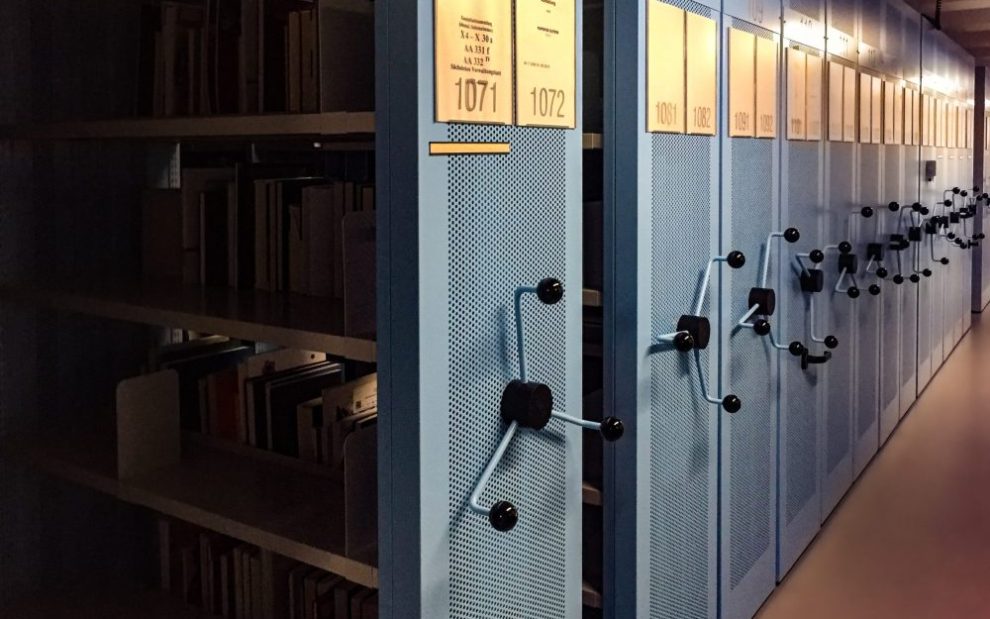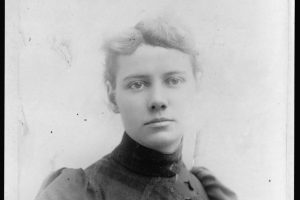Women’s religious congregations have a rich treasure that has remained relatively hidden from the rest of the world. Historians and genealogists are only now becoming widely aware of the wealth of sisters’ archives. For decades, indeed for well over a century, women religious have preserved the records of their congregations and ministries. In many ways, they predated what the United States Bishops expressed in 1974 in A Document for Ecclesiastical Archives. With the nation’s bicentennial approaching, the bishops realized that “church historians have still not penetrated to the heart of the peculiarly American experience in all too many cases, because they have not had access to the pertinent documents of bishops, dioceses, religious orders, and institutions.”
Exact holdings vary for each congregation, but sisters have kept meticulous records. Each time they opened a large or small institution, they did so with the required documents. Sometimes they also kept related correspondence and written discussions. Archival holdings document the sisters’ great desire to serve even while they dialogued with clergy about issues of debt and matters of justice. From religious archives, people can learn not only about the nuns who taught or nursed or mentored them but also about the larger issues that shaped the institutions of their lives. St. Joseph Sisters from Watertown, New York, for example, have a record of their arrival in the village of Norwood, 75 miles from the motherhouse, in 1959. Although the school year was about to begin, they discovered that the promised parish convent was not completed. With no place prepared for them to live, they checked in to the local hotel rather than delay instruction for the children. In 1951, in Martinsburg, West Virginia, when no one was able to finish the shell of the hospital building in town, the Holy Spirit Sisters from Pittsburgh completed it and expanded the hospital, all the while making firm friends in a city not particularly welcoming to Catholics.
Records of sisters’ yearly ministry assignments show the evolution of the works of congregations, along with a widening understanding of mission and charism. After Vatican II, sisters extended education outside classrooms to parish halls, hospital rooms, counseling centers, and homes. Sisters who saw the need for nutrition among their neighbors addressed the matter not only by providing meals but by picketing for the United Farmworkers Union and lobbying legislators in Washington, D.C. Each congregation’s records of its deceased members contain evidence of otherwise unknown works and spiritual development, as well as family information.
In 1884, the U.S. Bishops were certain that Catholic schools were essential if the children of immigrants were to escape the sectarian influence of Protestantism through general education. The bishops clearly wanted sisters to staff the Catholic schools. Women religious answered calls to cities and towns where people worked in mines or steel mills, where they built railroads or harvested grain, and where they could offer little remuneration. Sisters taught in crowded neighborhoods in Chicago, Philadelphia, Cleveland, and San Francisco. They just as frequently went to unassuming towns like Clyde, Kansas; Carthage, New York; Benwood, West Virginia; Maple Mount, Kentucky; and Donora, Pennsylvania. They started hospitals, sometimes with hardly a dozen beds, for those who were ill or injured. They followed railroad lines to places of pioneer settlement, and they kept records of school enrollment and charity patients from Port Henry, New York, to Silver City, New Mexico. They lived as teachers, nurses, stalwarts of the faith, and neighbors to people in every part of the country.
The archives of religious contain the records of what they have done and what they have failed to do. What is not clear to the U.S. public is that these archival records are in crisis.
As the number of sisters in the United States declines, numerous congregations can no longer sustain large and aging motherhouses. They are forced to seek other uses for their buildings and more efficient housing for their members. The placement of archives is a major issue in this process and requires some years of preparation. If a congregation’s plan to move comes together suddenly, archives are in particular danger, so much so that archival holdings are at risk of being separated, dislocated, even destroyed. Most likely, some are already lost.
Sisters’ archives carry unique records of people on the margins of society. They are part of the history of women, of the U.S. Catholic Church, of cities, and of the nation itself. They are witnesses to immigrant life from early days to the present, and they include the stories of sisters and congregations that have themselves been immigrants. They are integral to the history of education, health care, social service, and social justice in this country, and they reveal the depths of the lives of Catholics in and out of the pews. The story of today’s Catholics and the generations before them will not be complete if these archives are not preserved and made available.
Currently, some congregations are involved in local and national collaborative planning, and several models exist for consolidating efforts. With combined resources, congregations envision repository space for archives with required temperature, humidity, and light control. They will be able to invest in software systems to list their holdings and make finding aids, while engaging more trained archivists in the work. Some universities are accepting the archives of religious with the plan that they will continually provide staff and proper conditions for sustainability and accessibility. In other instances, congregations are joining together to build new buildings. In addition to trained staff, proper conditions, and accessibility, they want to provide programs and display spaces to make these collected treasures known to the public. Another possibility is that civic leaders might recognize how essential religious congregations are to local history, and regional museums could accept and care for the collections. Or the Catholic archives of a region might be combined to include collections of women and men religious, dioceses, and universities.
U.S. Catholics, who hold long and cherished relationships with sisters, need to understand this issue. Together with religious, they can create options not yet imagined. Anyone in fields that include history, museums, culture and arts, education, filmmaking, technology, fundraising, and law may have something to propose. Now is the timeto offer these gifts. The need is great, yet ideas for 21st-century management of religious archives are in their infancy. This is an opening for new contexts and new access to the religious, racial, and cultural stories of people who are elsewhere forgotten and whose struggles have been ignored.
The disposition of these archives is a major issue, and while it is largely Catholic, it is not entirely so. These are records of regions and their people. Partnerships are greatly needed in a field where a few years ago they were not even imagined. This is a crisis offering the opportunity for fresh thinking. Who knows what insights will arise in these times—and what new records will be generated!
Image: Unsplash/C M














Add comment